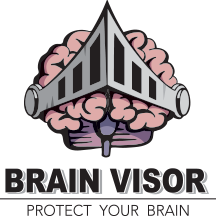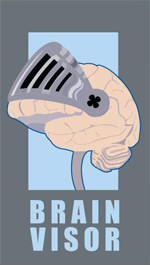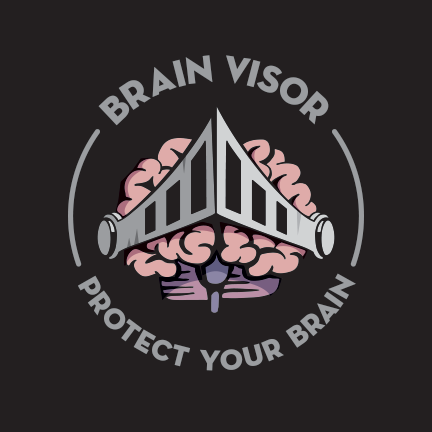Disconnection Syndromes, Connectopathies & Cross-Wiring
In a brain composed of localized but connected specialized areas, disconnection leads to dysfunction. (Catani & Ffytche, 2005)
CEREBRAL CONNECTIONS / DISCONNECTION SYNDROMES
Although Karl Wernicke first proposed a theory of disconnection syndromes in 1874, localized brain theories dominated the field of neuroscience in the early 20th century causing his work to be effectually unappreciated. In 1965, Norman Geschwind published a paper on distributed brain networks that brought to the forefront the disconnection paradigm.
Neurons are generally ‘bundled’ in collective structures known as tracts, pathways or fibers. Three major types of fibers connect the neocortex:
Projection fibers "project" from the cortex to the lower parts of the brain or vice versa via efferent or afferent fibers. Efferent fibers project (exit) from the cortex to lower areas of the brain. Afferent fibers project (arrive) to the cortex.
Association fibers connect areas within the same hemisphere. They allow for distinct cortical areas to "associate" with one another.
Commissural fibers travel across "commissures" in the brain. They extend from one hemisphere of the brain to the other. The cutting of cerebral connections is called a disconnection. Disconnections of either inter- or intrahemispheric connections can result in a variety of disconnection syndromes:
Aphasia – loss of ability to understand or express speechAgnosia – (not knowing) partial or complete inability to recognize sensory stimuli
Alexia – inability to see words or to read
Acopia – inability to copy a geometric design
Anosmic – lacking the sense of smell
Contralateral Neglect – inability to perceive and attend to objects, or even one's own body, in a part of space, despite the fact that visual acuity, somatic sensation, and motor ability remain intact
CONNECTOPATHIES
Connectopathies are pathological patterns of connections caused by miswiring or damage to white matter axons. Current research suggests that some psychiatric and neurodegenerative disorders may be the result of functional disconnection and are associated with such disorders as schizophrenia (Friston & Frith, 1995; Lynall et al., 2010), autism (Geshwind & Levitt, 2007), ADHD (Niedermeyer & Naidu, 1997), developmental dyslexia (Paulesu et al., 1996), working memory in Turner Syndrome (Bray, Dunkin, Hong, & Reiss, 2011), Alzheimer’s disease (Balthazar et al., (2013), dementia (Toga & Thompson, 2014), and depression (Liao et al., 2013).
In order to understand the potential deleterious etiology and consequences of connectopathies, one of the major challenges of modern neuroscience is to define the complex network of neural connections in the human brain. The Human Connectome Project (HCP) is undertaking a key aspect of this challenge by elucidating the neural pathways that underlie brain function and behavior. Deciphering this amazingly complex wiring diagram will hopefully reveal much about what makes us uniquely human and what makes every person different from all others. And, importantly, continued study of the intricacies of brain miswirings and white matter lesions should facilitate our understanding of disorders associated with disconnection.
Jeffry Lichtman – Connectomics (video)
Sebastian Seung – I Am My Connectomme (video)
Karl Deisseroth - Clarity (video)
CROSS WIRING – SYNESTHESIA
One of the most unique and rare results from ‘cross-wiring’ in the brain is synesthesia. While difficult to define, synesthesia is a perceptual condition of mixed sensations. Typically, one type of stimulation evokes the sensation of another, as when the hearing of a sound produces the visualization of a color.
Some scientists hypothesize that in synesthetes, neurons and synapses that are "supposed" to be contained within one sensory system cross to another sensory system. It is unclear why this might happen but some researchers believe that these crossed connections are present in everyone at birth, and only later are the connections refined. In some studies, infants respond to sensory stimuli in a way that researchers think may involve synesthetic perceptions. It is hypothesized by these researchers that many children have crossed connections and later lose them. Adult synesthetes may have simply retained these crossed connections (Melissa Lee Phillips, Neuroscience for Kids Consultant).
ADDITIONAL REFERENCES
Balthazar, M., Pereira, F., Lopes, T., da Silva, E., Coan, A., Campos, B., Duncan, N., Stella, F., Northoff, G., Damasceno, B., & Cendes. F. (2013). Neuropsychiatric symptoms in Alzheimer’s disease are related to functional connectivity alterations in the salience network. Human Brain Mapping, 1-10.
Bray, S., Dunkin, B., Hong, D., & Reiss, A. (2011). Reduced functional connectivity during working memory in Turner syndrome. Cerebral Cortex, 21, 2471-2481.
Catani, M. & Ffytche, D. (2005). The rises and falls of disconnection syndromes. Brain, 128, 2224-2239.
Friston, K. & Frith, K. (1995). Schizophrenia: A disconnection syndrome? Clinical Neuroscience, 3, 89-97.
Geschwind, D. & Levitt, P. (2007). Autism spectrum disorders: developmental disconnection syndromes. Current Opinion in Neurobiology, 17, 103-111.
Liao, Y., Huang, X., Wu. Q., Yang, C., Kuang, W., Du, M., Lui, S., Yue, Q., Chan, R., Kemp, G, & Gong, Q. (2013). Is depression a disconnection syndrome?
Meta-analysis of diffusion tensor imaging studies in patients with MDD. Journal of Psychiatry & Neuroscience, 1, 49-56.
Lynall, M., Bassett, D., Kerwin, R., McKenna, P., Kitzbichler, M., Muller, U., & Bullmore, E. (2010). Journal of Neuroscience, 30, 9477-9487.
Paulesu, E., Frith, U., Snowling, M., Gallagher, A., Morton, J., Frackowiak, R., & Frith, C. (1996). Is developmental dyslexia a disconnection syndrome? Evidence from PET scanning. Brain, 119, 143-157.
 |
BrainVisor – Protect Your BrainBrainVisor does not provide medical or psychological advice, diagnosis or treatment recommendations. The material on this site is for informational purposes only and is not a substitute for your doctor or other health care professional's care.
|
 |
||
|









